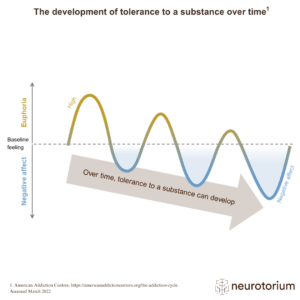Index for
slide deck
Title
-1024x576.jpg)
Fundamentals of Neurobiology
To understand psychiatric disorders, it is important to have a working understanding of the normal structure and function of the nervous system.
Introduction to neurobiology
-1024x576.jpg)
Introduction to neurobiology
-1024x576.jpg)
Organisation of the nervous system
!--?xml version="1.0" encoding="UTF-8" standalone="yes"?-- To understand psychiatric disorders, it is important to have a working understanding of the normal structure and function of the nervous system. The central nervous system (CNS; brain, spinal cord) and peripheral …
-1024x576.jpg)
Neurones
!--?xml version="1.0" encoding="UTF-8" standalone="yes"?-- The neurone constitutes the functional unit of the nervous system; there are over 100 billion neurones in the brain.[1,2,5] Each neurone has the ability to interact with and influence many other cells, which creat…
-1024x576.jpg)
Anatomical regions of the brain
!--?xml version="1.0" encoding="UTF-8" standalone="yes"?-- The brain is divided into four anatomical regions: the diencephalon, brainstem, cerebrum, and cerebellum, as described on the slide.[1,2]
References:
[1] Kandel ER, Schwartz JH, Jessell TM (eds). Principles of Ne…
-1024x576.jpg)
Cerebrum
!--?xml version="1.0" encoding="UTF-8" standalone="yes"?-- The cerebral cortex is the main functional unit of the cerebrum.[2] The three main functional areas of the cerebral cortex are:[1,2]
- motor areas that control voluntary movement (primary, secondary, and associatio…
-1024x576.jpg)
Lobes of the brain
!--?xml version="1.0" encoding="UTF-8" standalone="yes"?-- The brain can be thought of as comprising five ‘lobes’ – the four lobes of the cerebral cortex and a fifth lobe, the insula, deep within the brain, as shown on the slide.[1,2,3] The lobes of the cerebral cortex ar…
Neurosynaptic transmission
-1024x576.jpg)
Neurosynaptic transmission
-1024x576.jpg)
Neurotransmission
!--?xml version="1.0" encoding="UTF-8" standalone="yes"?-- Information moves through the nervous system via two integrated forms of communication – electrical neurotransmission and chemical neurotransmission, as shown on the slide.[1]
An action potential is generated at t…
-1024x576.jpg)
The synapse
!--?xml version="1.0" encoding="UTF-8" standalone="yes"?-- Neurones do not physically touch one another; two neurones are separated by a gap, known as a synaptic cleft.[1] Because neurones do not touch, and an action potential cannot ‘jump’ across a synaptic cleft, the si…
-1024x576.jpg)
Process of chemical neurotransmission
!--?xml version="1.0" encoding="UTF-8" standalone="yes"?-- The idea that neurotransmission occurs at synapses and is mediated by chemicals was, at first, a contentious issue.[1] It was in the first half of the 1900s that experiments proved chemical neurotransmission occur…


-1024x576.jpg)
-1024x576.jpg)
-1024x576.jpg)
-1024x576.jpg)
-1024x576.jpg)
-1024x576.jpg)
-1024x576.jpg)


